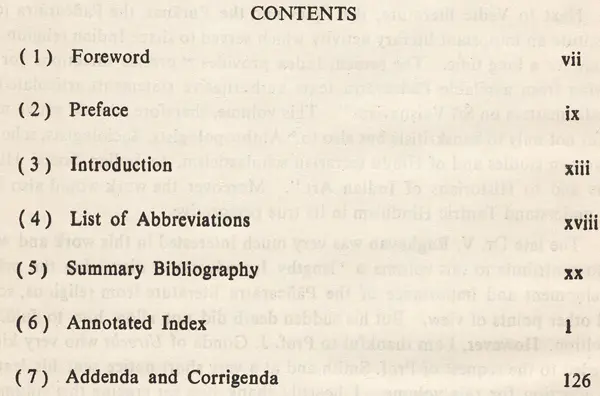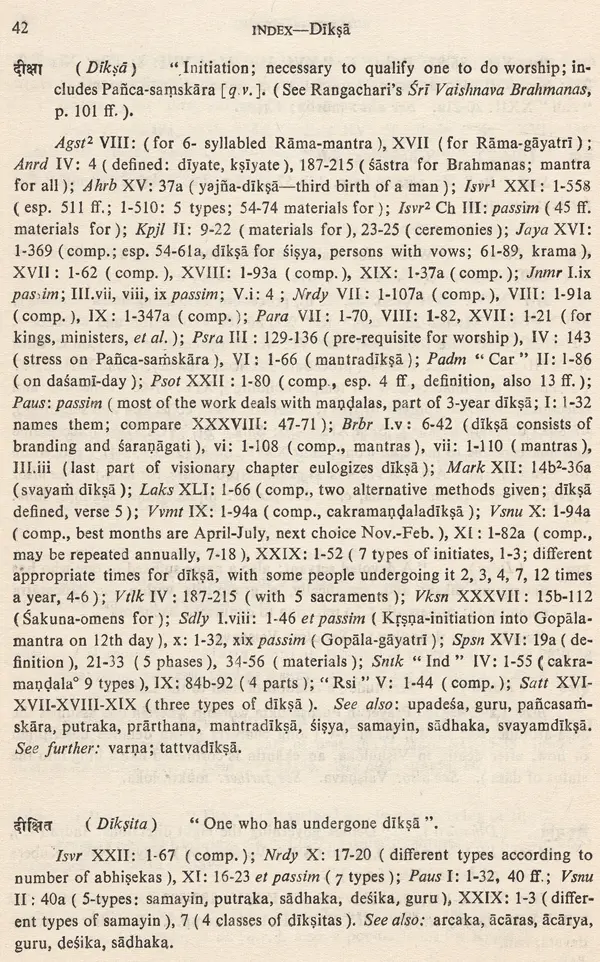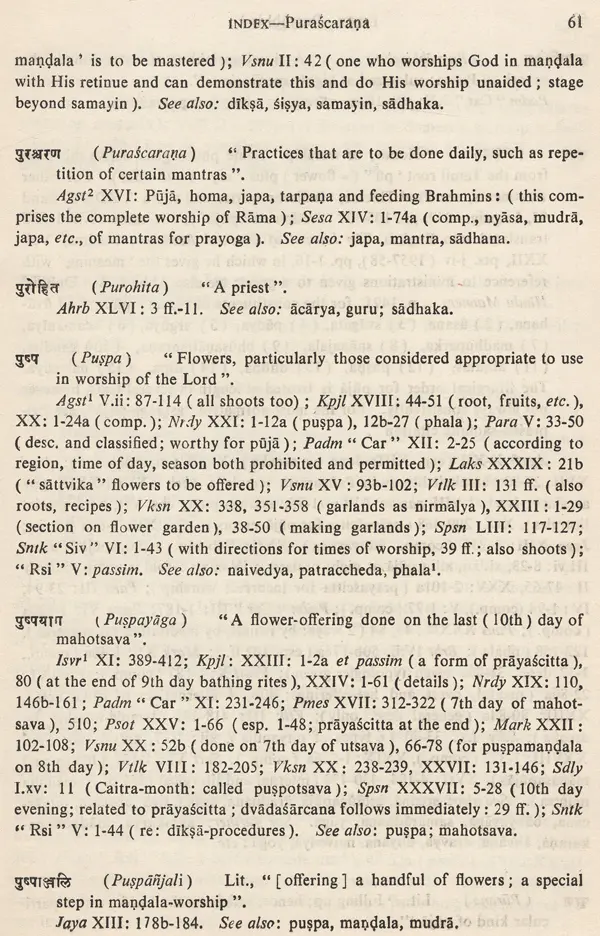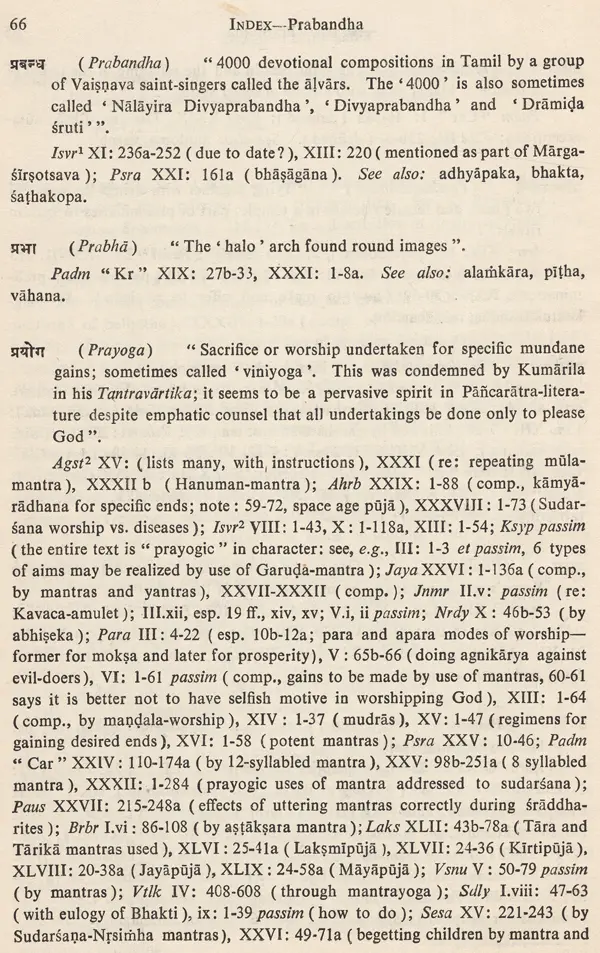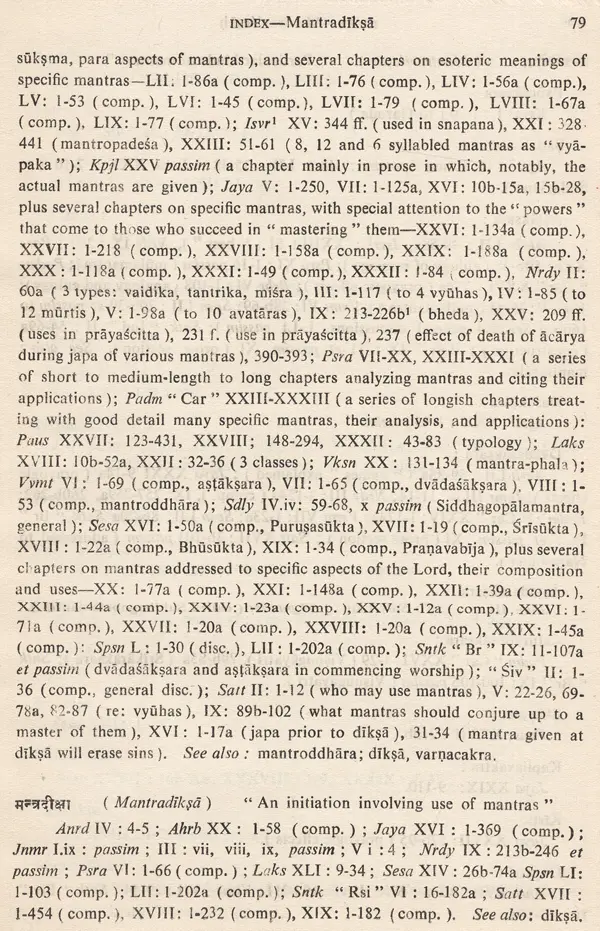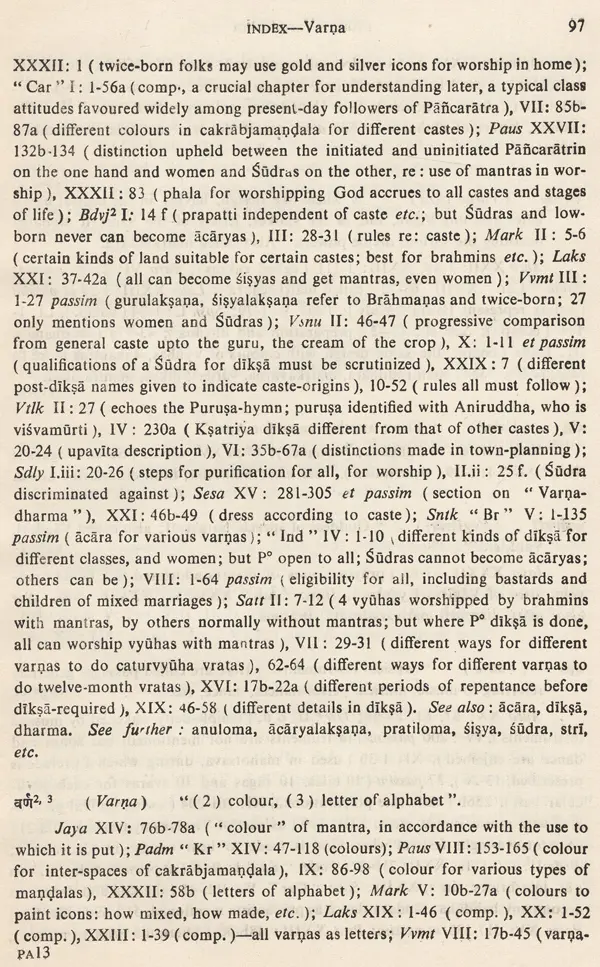
A Descriptive Bibliography of The Printed Texts of The Pancaratragama (Volume 2 An Old & Rare Book)
Book Specification
| Item Code: | UAR880 |
| Author: | H. Daniel Smith |
| Publisher: | Oriental Institute, Vadodara |
| Language: | English |
| Edition: | 1980 |
| Pages: | 132 |
| Cover: | HARDCOVER |
| Other Details | 10.00 X 6.00 inch |
| Weight | 370 gm |
Book Description
I am happy to put into the hands of scholars the present volume: "A Descriptive Bibliography of the Printed Texts of the Pancaratragama Vol. II" as G. O. S. Volume No. 168. This is a companion volume to our earlier publication, A Descriptive Bibliography of the Printed Texts of the Pancaratra. gama Vol. 1' (G. O. S. No. 158). In the earlier volume the editor Prof. H. Daniel Smith presented a descriptive bibliography of 33 Texts of the Pancaratra School. Next to Vedic literature, the Epics and the Puraņas, the Pancaratra texts constitute an important literary activity which served to shape Indian religion and culture for a long time. The present Index provides "precise directions for re trieving from available Pancaratra texts authoritative statements articulated on specific matters on Sri Vaisnavism". This volume, therefore, should prove most useful not only to Sanskritists but also to "Anthropologists, Sociologists, scholars of women studies and of Hindu sectarian scholasticism, to Indian Social Histo rians and to Historians of Indian Art ". Moreover the work would also help one understand Tantric Hinduism in its true perspective. To led()The late Dr. V. Raghavan was very much interested in this work and wish. ed to contribute to this volume a lengthy Introduction' discussing the origin, development and importance of the Pancaratra literature from religious, social and other points of view. But his sudden death did not allow him to fulfil his ambition. However, I am thankful to Prof. J. Gonda of Utrecht who very kindly acceded to the request of Prof. Smith and at a very short notice sent his learned at a very sho Introduction for this volume. I heartily thank him for gracing this volume by his scholarly Introduction. Had the time not been short, we could perhaps, have got a lengthy Introduction' from Prof.
Gonda as well. I hope this volume also will be warmly received by the scholars like the earlier one. I thank my colleague Shri P. H. Joshi, Research Officer, for his meticulous care in going through the proofs of the present volume. My thanks are due to the University Grants Commission and the Govern ment of for giving financial help towards the publication of this volume. I also express my sense of gratitude to Shri Bansilal M. Shah, Manager, M. S. University Press and his colleagues for taking personal interest for expedit ing the publication of the present volume.
The intent of this index is to render more accessible to interested scholars blocks of topically-related materials found in the samhita-texts of the Pancaratra canon of Sanskrit writings. The sectarian texts of the Pancaratra community of Srivaisnavas, along with the samhitas, agamas, and tantras of other Vaisnava, Saiva and Sakta movements of medieval India, constitute all together an enormous body of literature, the relevance of which to the study of developing Hinduism is only recently being recognized. After the Vedic corpus, the Epics and the Puranas, the sectarian samhitas/agamas/tantras constitute a fourth surge of creativity which served to shape Indian religion and culture during a long evolution. At the very least this index provides precise directions for retrieving from available Pancaraira texts authoritative statements articulated on specific matters within one school of Sri- vaisnavism among the many movements of sectarian Hinduism. For that reason alone, the research potential of this index should be of interest to Sanskritists as well as to anthropologists and to sociologists, to scholars of women's studies and of Hindu sectarian scholasticism, to Indian social historians and to historians of Indian art, no less than to others researching Indian norms. Beyond this, however, it is hoped that studies based on this index will serve both to broaden and to make more informed our current understanding of "tantric" Hinduism. The present publication is designed to be used in conjunction with Vol. 158 of this same series, A Descriptive Bibliography of the Printed Texts of the Pancaratragama, Vol. I (Baroda, 1975). In that earlier volume all the 33 texts utilized in this index were described and condensed into English from their Sanskrit originals. Reference to the précis provided there gives the user of this index a ready contextual framework for any topical treatment within a given text as well as in the available literature as a whole. The format of the present index is straightforward in execution. Topics selected for indexing are arranged alphabetically according to the Sanskrit order through. Each entry appears in boldface Devanagari script along the left margin of the page, A transliteration into Roman letters follows that (in paren thesis). An explanatory identification of the topic in turn follows, almost invariably in quotation marks so that it will not be mistaken either for a finished definition or for a verbatim translation of the Sanskrit term(s) involved. That legend serves, simply, to indicate the appropriate contextual usage of the sectarian terminology, and provides at best a working definition to the inexperienced researcher Citations to texts given as references under each topic point to specific passages in Pancaratra samhita- literature; titles cited are listed in alphabetical order according to the Sanskrit scheme, using 4-letter abbreviations for all titles (listed below).
There is no attempt to arrange textual references according to significance of the contents, or according to chronology of composition, or according to the script in which published; the alphabetical order is retained as most consistent with regular retrieval procedures. Adhyaya-numbers are assigned Roman numerals, sloka-citations Arabic digits. When the letter "a" or "b" follows a sloka-number it means the passage referred to ends or begins with the first or second pada of what is characteristically an anuştup-verse. Matter presented in parentheses and brackets after specific textual citations is usually explanatory in nature, often noting what is unusual in a particular treatment.
**Contents and Sample Pages**

